
On a north-facing hillside in Norwich, Vermont, mostly hidden behind a historic farmhouse and barn lies a gorgeous and sophisticated landscape. It is the home garden of designer Bill Noble and his husband, Jim Tatum, built and tended over the past three decades with the assistance of horticulturist Susan Howard.
In his book Spirit of Place: The Making of a New England Garden, Bill describes the founding principles that have guided their process. The garden should feel “relaxed and exuberant,” he writes. “It should evolve and not stand still. It should be informed, enchanting and never complete. It should be interesting in all seasons.”
Having visited and photographed the garden at the height of summer and in early fall, Fine Gardening editors can attest that these goals not only have been met but have been exceeded. Careful plant selection and placement guarantee that from month to month, and even from day to day, there will always be something new to see.
The following is an exploration of the planting strategies that make this garden fascinating in every season.
See some of our favorite plants for multiseason interest
Planting Plan 1: A Naturalistic Design That Shines All Year
Summer: Serves a practical purpose
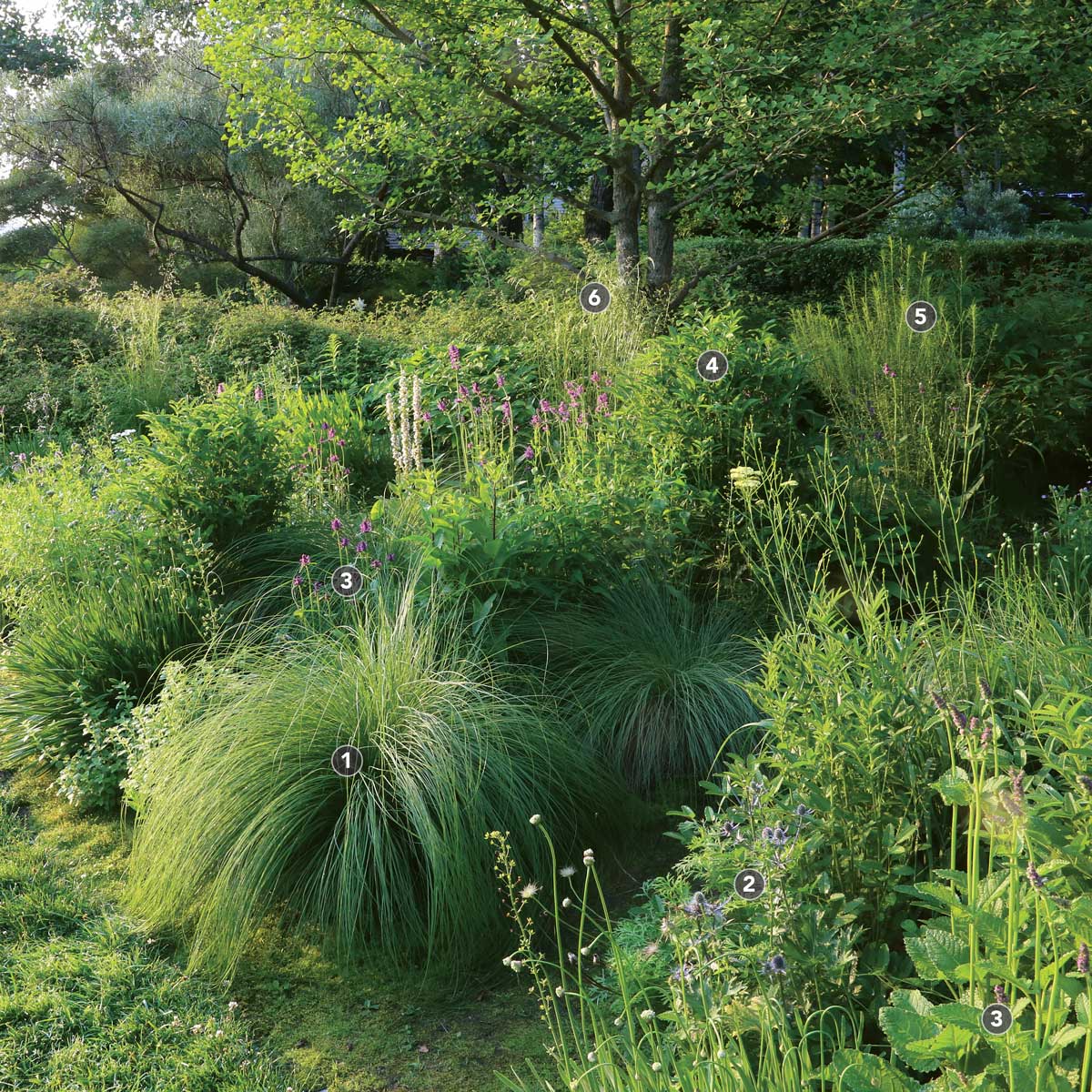
As a transitional space between more formal areas and the hayfield beyond, this section of the garden, which Bill has dubbed the New Meadow, always has something interesting going on. Choice grasses mingle with pollinator-friendly perennials, creating a charming textural tapestry in midsummer, when the finer-leaved plants start to fill in.
1. Prairie dropseed (Sporobolus heterolepis, Zones 3–8)
2. ‘Blue Glitter’ sea holly (Eryngium planum ‘Blue Glitter’, Zones 4–9)
3. ‘Hummelo’ betony (Stachys monieri ’Hummelo’, Zones 4–8)
4. ‘Red Thunder’ great burnet (Sanguisorba officinalis ’Red Thunder’, Zones 4–8)
5. Arkansas bluestar (Amsonia hubrichtii, Zones 4–9)
6. ‘Goldtau’ tufted hair grass (Deschampsia cespitosa ‘Goldtau’, Zones 3–8)
Fall: Autumn amps up the color

The ginkgo that Bill grew from a sapling casts a golden glow over the meadow planting in fall, setting off the intense jewel tones of sneezeweed, aster, and burnet blooms that sparkle amid the grasses. This is also the showiest season for shade-loving ‘Autumn Bride’ heuchera, which filled space under the tree with its softly textured foliage all summer.
1. Ginkgo (Ginkgo biloba, Zones 3–8)
2. ‘Loysder Wieck’ sneezeweed (Helenium ‘Loysder Wieck’, Zones 3–8)
3. ‘Autumn Bride’ heuchera (Heuchera villosa ‘Autumn Bride’, Zones 3–8)
4. ‘Red Thunder’ great burnet
5. ‘October Skies’ aromatic aster (Symphyotrichum oblongifolium ‘October Skies’, Zones 4–8)
Planting Plan 2: Cohesive Design for Color All Summer Long
Midsummer: Repeated colors and shapes keep the design cohesive
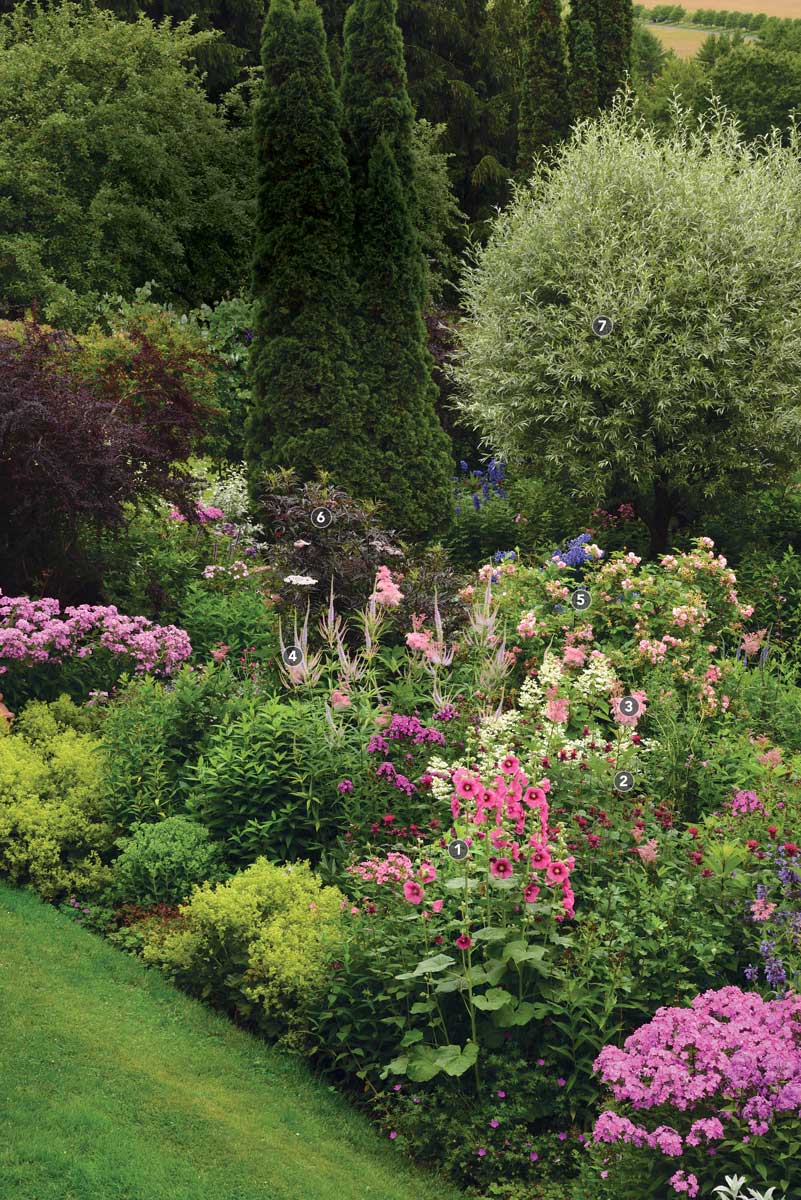
The Flower Garden is arguably the centerpiece of this landscape. It is designed to be viewed both from the home’s back deck and from the paths that divide the rectangular space into quadrants. Long-blooming plants such as queen of the prairie, panicle hydrangea, garden phlox, and bee balm are repeated through all four quadrants, knitting the design together.
1. Hollyhock (Alcea rosea cv., Zones 3–10)
2. ‘Purple Rooster’ bee balm (Monarda didyma ‘Purple Rooster’, Zones 4–9)
3. ‘Venusta’ queen of the prairie (Filipendula rubra ‘Venusta’, Zones 3–8)
4. Culver’s root (Veronicastrum virginicum, Zones 3–8)
5. ‘F. J. Grootendorst’ shrub rose (Rosa ‘F. J. Grootendorst’, Zones 5–9)
6. Black Beauty® elderberry (Sambucus nigra ‘Gerda’, Zones 4–7)
7. ‘Silver Column’ white willow (Salix alba var. sericea ‘Silver Column’, Zones 3–8)
Late summer: New tints, tones, and textures emerge with each passing week

Taken in mid-August, about a month later than the previous image, this photo reveals the moment when the warm amber seed heads of queen of the prairie and feather reed grass begin to hint at the late-season color progression still to come. An assortment of garden phlox cultivars provides a reliable supply of bright violet and pink from early summer through fall.
1. ‘Karl Foerster’ feather reed grass (Calamagrostis × acutiflora, ‘Karl Foerster’ Zones 5–11)
2. Panicle hydrangea (Hydrangea paniculata cv., Zones 3–8)
3. New York ironweed (Vernonia noveboracensis, Zones 5–9)
4. Garden phlox (Phlox paniculata cv., Zones 4–8)
5. ‘Spark’s Variety’ monkshood (Aconitum henryi ‘Spark’s Variety’, Zones 3–7)
Planting Plan 3: A Shady Bed Full of Multiseason Interest
Late spring: Longtime companions anchor a moist, shady bed

This lovely and durable group of plants was moved 30 years ago from Bill’s previous garden. In spring, the vigorous emergence of new growth highlights the interplay between the plants’ varied textures, and the bronze-tinted leaf color of the rodgersia is particularly eye-catching.
1. ‘Elegans’ hosta (Hosta sieboldiana ‘Elegans’, Zones 3–9)
2. European ginger (Asarum europaeum, Zones 4–7)
3. Eastern bluestar (Amsonia tabernaemontana, Zones 3–9)
4. August lily hosta (Hosta plantaginea, Zones 3–9)
5. Lady fern (Athyrium filix-femina, Zones 4–8)
6. ‘Bronze Form’ rodgersia (Rodgersia podophylla ‘Bronze Form’, Zones 4–9)
Summer: Pale blooms create a fresh new look
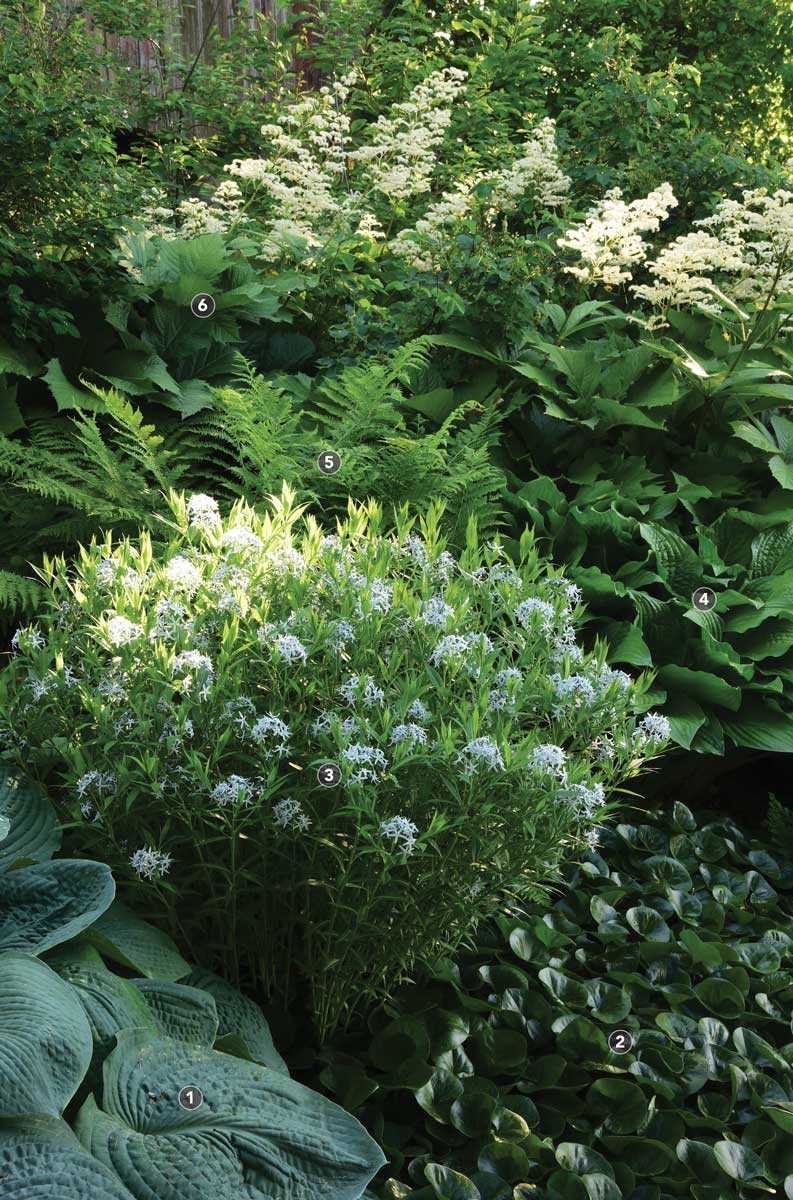
Just a few weeks later, the flowers of the Eastern bluestar and the rodgersia burst open and steal the show. Although the bronze foliage of the rodgersia has shifted to green, the bold leaves still add exceptional texture to the vignette. Another highlight for this combo comes in late summer, when August lily hosta’s showy white flowers fill the garden with their incredible fragrance.
1. ‘Elegans’ hosta
2. European ginger
3. Eastern bluestar
4. August lily hosta
5. Lady fern
6. ‘Bronze Form’ rodgersia
Planting Plan 4: A Design for Long Borders That Evolves Over the Year
Summer: Destinations draw you through the garden
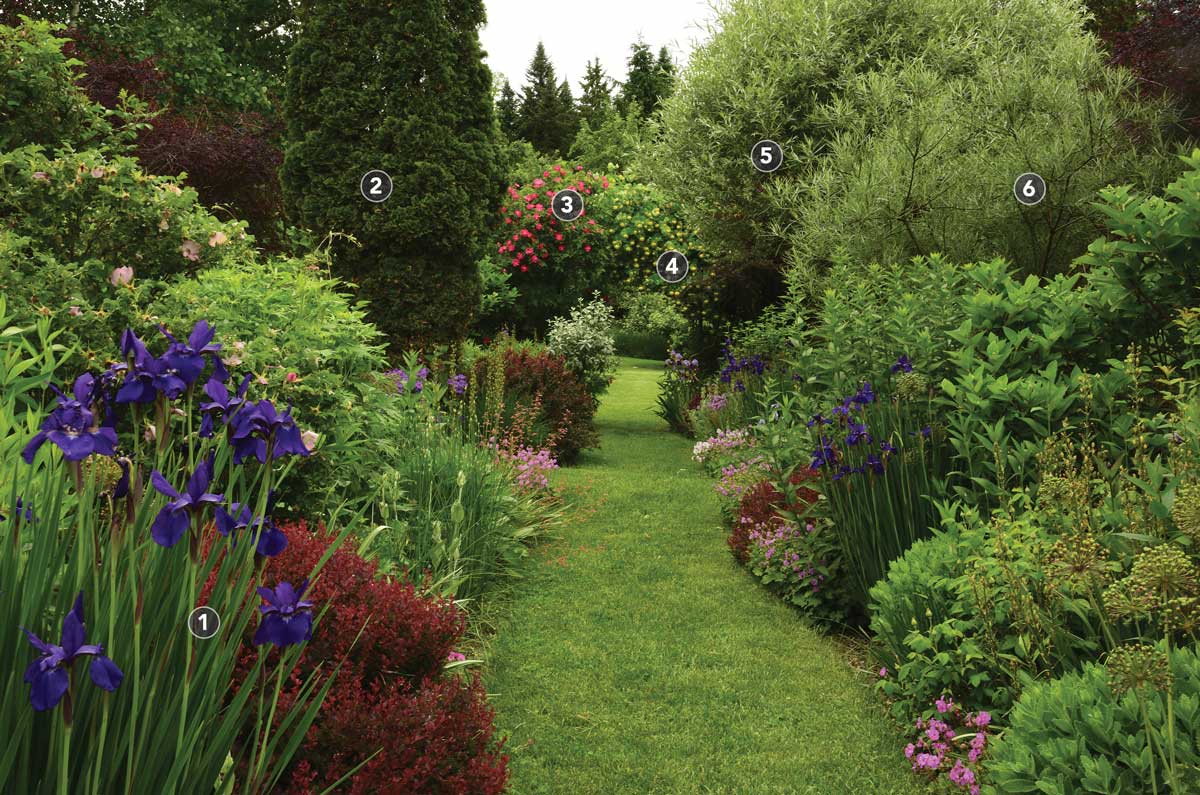
Following the paths that intersect at the center of the flower garden offers a full-immersion experience of focal points that would be missed if viewed from above. For example, the bloom-covered arch over the western entrance is completely irresistible in early summer.
1. ‘Caesar’s Brother’ Siberian iris (Iris sibirica ‘Caesar’s Brother’, Zones 3–8)
2. Emerald Green arborvitae (Thuja occidentalis ‘Smaragd’, Zones 2–7)
3. ‘William Baffin’ rose (Rosa ‘William Baffin’, Zones 3–9)
4. Grape honeysuckle (Lonicera prolifera, Zones 4–8)
5. ‘Silver Column’ white willow
6. Rosemary willow (Salix elaeagnos subsp. angustifolia, Zones 4–8)
Fall: Textural and colorful plants swap roles

Siberian irises have a grassy presence in the autumn beds, when plants like Joe Pye weed top their big, bold towers of foliage with frothy blooms. Pinky Winky® panicle hydrangea and Autumn Joy sedum add additional flushes of warm color.
1. ‘Glutball’ Joe Pye weed (Eutrochium maculatum ‘Glutball’, Zones 3–8)
2. Garden phlox (Phlox paniculata cv., Zones 4–8)
3. Autumn Joy sedum (Hylotelephium ‘Herbstfreude’, Zones 3–9)
4. Pinky Winky® panicle hydrangea (Hydrangea paniculata ‘DVP PINKY’, Zones 3–8)
5. Rosemary willow
6. ‘Silver Column’ white willow
7. ‘Caesar’s Brother’ Siberian iris
Carol Collins is the associate editor. Special thanks to Bill Noble and Susan Howard for their extensive contributions to this article.


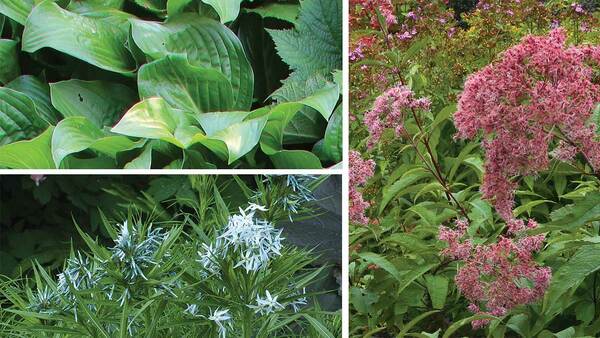
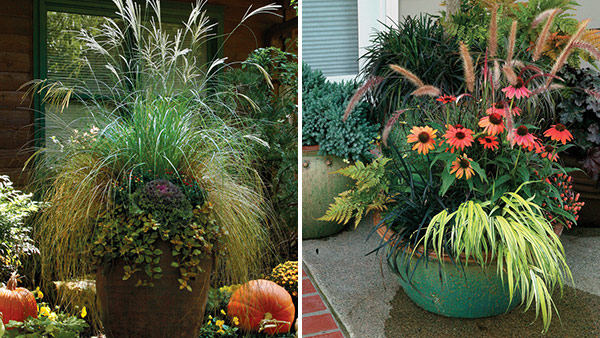
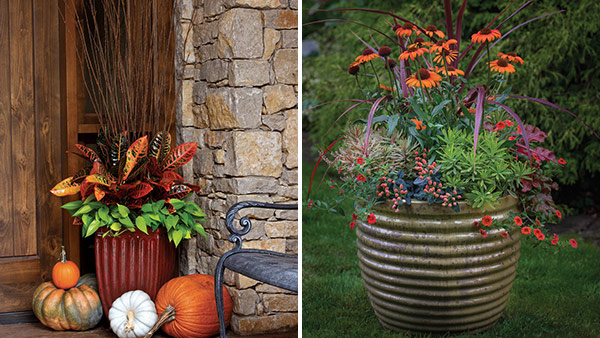













Comments
Log in or create an account to post a comment.
Sign up Log in